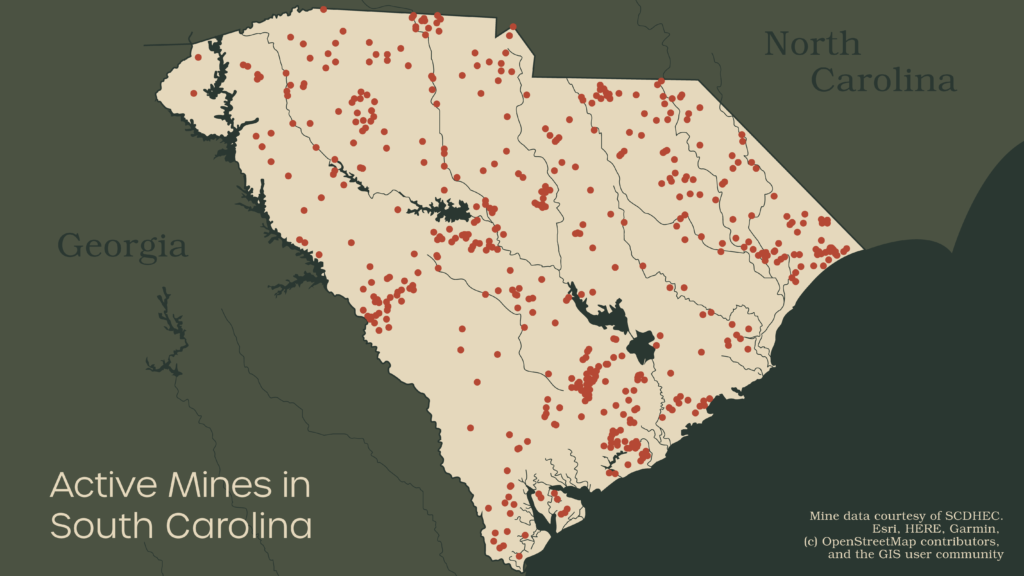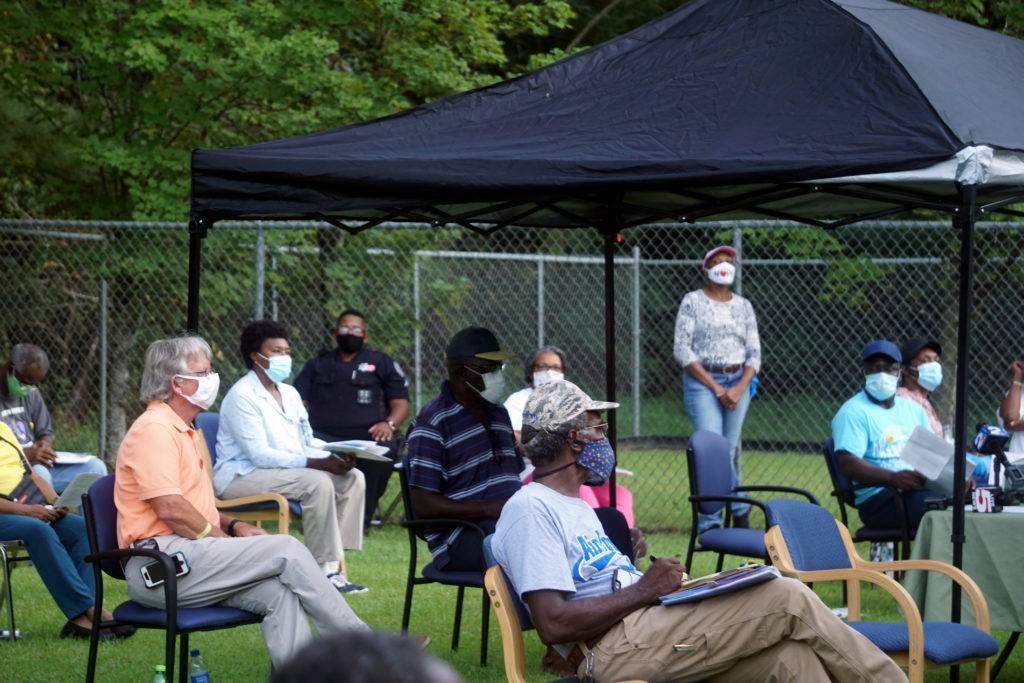Project
Donmar Sand Mine
The Huger Story
Huger is a tranquil area in Berkeley County filled with residents that have a strong connection to the area and their community. Many residents have lived there all of their life, and some residents live on parcels that were passed down from their grandparents and great-grandparents who were enslaved on that land. People are drawn to the natural, quiet atmosphere that’s unlike anywhere else.
In the Spring of 2017, Donmar, a sand mining company, received state and local permits authorizing two 5-acre mines on Charity Church Road in Huger, South Carolina. By November, Domar submitted for a Special Exception permit to Berkeley County to establish a larger, 30+ acre mine and simultaneously applied an Individual Mine permit to the S.C. Department of Health and Environmental Control.
The residents on Charity Church Road and the greater Huger area were concerned about how this mine would impact their quality of life. This wasn’t the first mine in their area, and they knew mining caused dust on the roads and in the air, noise at all hours, traffic that resulted in increased accidents, damage to their roads, and trash. These mines destroy the attributes that draw people to Huger. As a result, the community mobilized, attending as many meetings related to this mine. The meetings were primarily held on weeknights in Moncks Corner, which is over 25 miles from Huger. Many people started carpools to make sure they could get as many people from their community to each meeting. The mine eventually received a green light from the state and local level despite opposition.
Timeline of Donmar Sandmine and the Huger Community
- Spring 2017: Donmar received state/local permits authorizing two 5-acre mines.
- November 2017: Donmar submitted for a Special Exception permit to Berkeley County to establish a larger, 30+ acre mine. Simultaneously, an application for an Individual Mine permit was submitted to the S.C. Department of Health and Environmental Control.
- January 2018: The Berkeley County Board of Zoning Appeals denied Donmar’s Special Exception permit.
- March 2018: Donmar appealed the denial. Berkeley County and Donmar enter litigation.
- December 2018: Donmar resubmitted a request for a Special Exception for a larger mine. They later withdrew.
- September 2019: County Council approved a settlement agreement with Donmar, allowing the 30+ acre operation to move forward.
- March 2020: The S.C. DHEC Individual Mine permit for Donmar went on public notice. The Coastal Conservation League submitted technical comments and requested a public meeting.
- September 1, 2020: A joint in-person and virtual public meeting was held at the Baldwin Carson Community Outreach Center.
- October 22, 2020: S.C. DHEC granted state permits for the Donmar sand mine.
- Fall 2020: The South Carolina Environmental Law Project appealed the issuance of Donmar’s state permits on behalf of CCL’s members in Huger, SC.
- Early 2021: After years of opposition and months of negotiations, a settlement was reached with Donmar to provide community concessions to the Huger community.
The Concessions
The residents of Huger, the Coastal Conservation League, SCELP, and Rep. Jefferson worked to earn concessions for the community. The three pillars of this agreement are:
- Transfer of title for over 10 acres of land adjacent to Charity Church Road to the residents of Huger, SC.
- Funding for the Heart of Huger Revitalization Efforts to restore and expand a community park along Cainhoy Road.
- Bi-annual meetings between the Huger Community and Donmar for the first 2 years, and then annually thereafter for the life of the mine. This is crucial and allows the residents to stay informed about the operations.
How Huger, SC stood up against sand mining
The Greater Mining Issue
Donmar is one of many mines in South Carolina. There are over 500 active mines in South Carolina, with more than 100 in Charleston, Dorchester, and Berkeley Counties alone.

Sand mining is the extraction of sand, mainly through an open pit. This sand is often used in the manufacturing of roads, buildings, and many other industrial processes. It is necessary, but we don’t know the long-term effects on our environment. Once these holes are dug, the material excavated cannot be replaced. When the mine is closed, the hole in the ground remains. To mine, the topsoil has to be removed first to get down to the more desirable material. That topsoil is often relocated to nearby wetlands. Our wetlands are an essential part of our ecosystem because they provide a place for water to go preventing flooding. This sand fills in the wetlands and chokes out the life that lives in them.
Sand Mining in SC: solving the crisis you’ve probably never heard of

Residents of Huger attending the joint in-person and virtual DHEC meeting in Sept. 2020.
The Importance of Advocacy
The Huger residents are lucky to have a Representative that takes his job and his relationship with his constituents seriously. Representative Jefferson, Berkeley District 102, attended meetings with the Huger community and fought for them throughout the process.
The Coastal Conservation League had the opportunity to hear the community’s struggle with Donmar. After learning what the residents were hoping for, the Coastal Conservation League provided legal resources with SCELP (the South Carolina Environmental Law Project) to help the community get some concessions in their settlement with Donmar.
Most importantly, though, the residents of Huger are active members of their community. They pay attention to what is happening in their home and when they are put in a position where their home or their quality of life is threatened, they stand up for themselves. Their message to other communities who face similar issues is to stay informed and involved in what is happening in and around your community.
